at TA = 25°C, VS = 1.8 V,
VIN+ = 12 V, VREF = VS / 2, VENABLE = VS, and for all gain options (unless otherwise
noted)
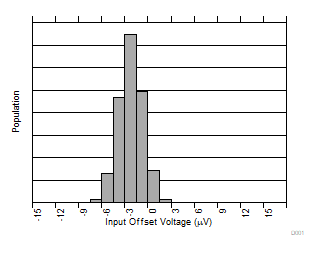 Figure 6-1 Input Offset Voltage Production Distribution
Figure 6-1 Input Offset Voltage Production Distribution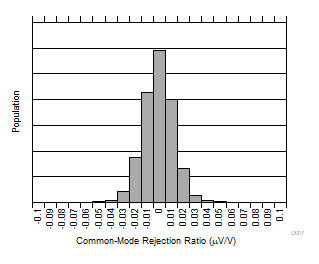 Figure 6-3 Common-Mode Rejection Production Distribution
Figure 6-3 Common-Mode Rejection Production Distribution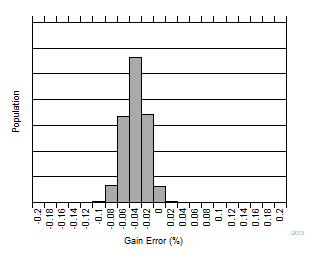 Figure 6-5 Gain Error Production Distribution
Figure 6-5 Gain Error Production Distribution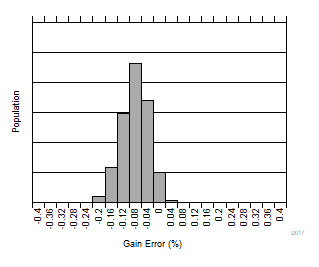 Figure 6-7 Gain
Error Production Distribution
Figure 6-7 Gain
Error Production Distribution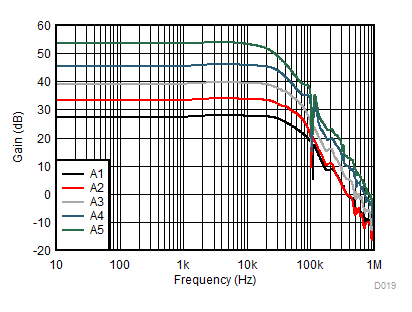 Figure 6-9 Gain vs. Frequency
Figure 6-9 Gain vs. Frequency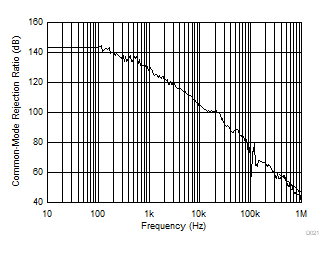 Figure 6-11 Common-Mode Rejection Ratio vs. Frequency
Figure 6-11 Common-Mode Rejection Ratio vs. FrequencyFigure 6-13 Output Voltage Swing vs. Output Current 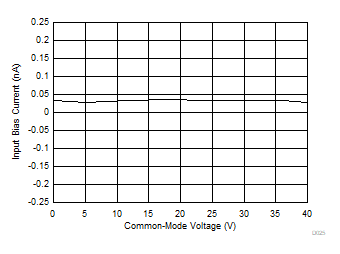 Figure 6-15 Input
Bias Current vs. Common-Mode Voltage (Shutdown)
Figure 6-15 Input
Bias Current vs. Common-Mode Voltage (Shutdown)Figure 6-17 Quiescent Current vs. Temperature (Enabled) 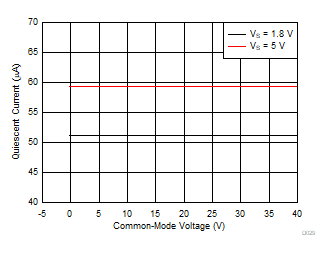 Figure 6-19 Quiescent Current vs. Common-Mode Voltage
Figure 6-19 Quiescent Current vs. Common-Mode Voltage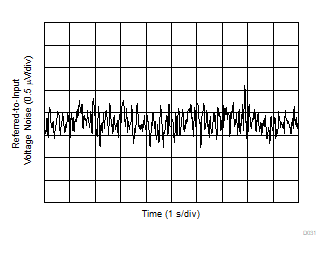 Figure 6-21 0.1-Hz to 10-Hz Voltage Noise (Referred-To-Input)
Figure 6-21 0.1-Hz to 10-Hz Voltage Noise (Referred-To-Input)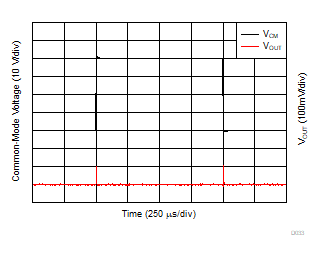 Figure 6-23 Common-Mode Voltage Transient Response
Figure 6-23 Common-Mode Voltage Transient Response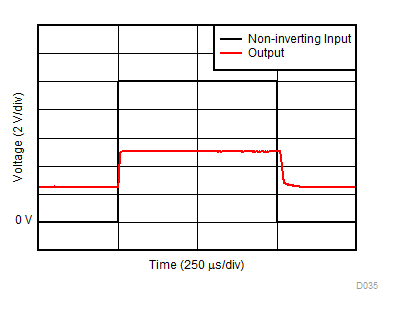 Figure 6-25 Noninverting Differential Input Overload
Figure 6-25 Noninverting Differential Input Overload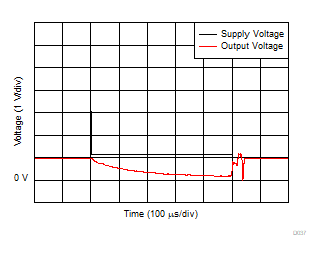 Figure 6-27 Brownout Recovery
Figure 6-27 Brownout Recovery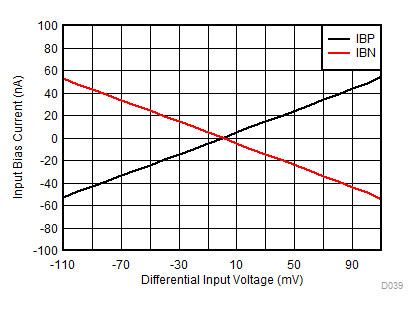
| VS = 5.0 V, VREF = 2.5 V, A1 devices |
| VS = 5.0 V, VENABLE = 0 V,
VREF = 2.5 V |
Figure 6-31 Output Leakage vs. Output Voltage (A1, A2, and A3 Devices)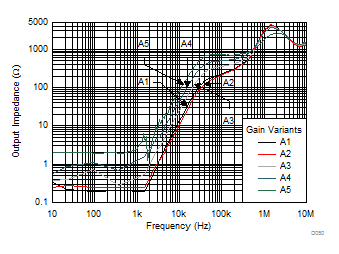 Figure 6-33 Output Impedance vs. Frequency
Figure 6-33 Output Impedance vs. FrequencyFigure 6-2 Offset Voltage vs. Temperature Figure 6-4 Common-Mode Rejection Ratio vs. Temperature 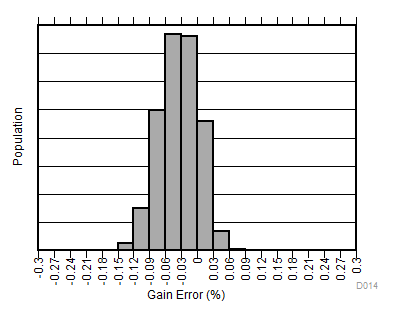 Figure 6-6 Gain Error Production Distribution
Figure 6-6 Gain Error Production DistributionFigure 6-8 Gain
Error vs. Temperature 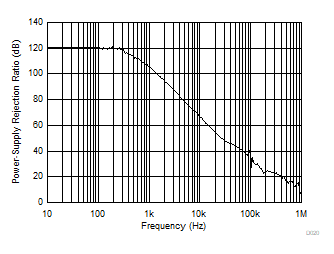 Figure 6-10 Power-Supply Rejection Ratio vs. Frequency
Figure 6-10 Power-Supply Rejection Ratio vs. FrequencyFigure 6-12 Output Voltage Swing vs. Output Current 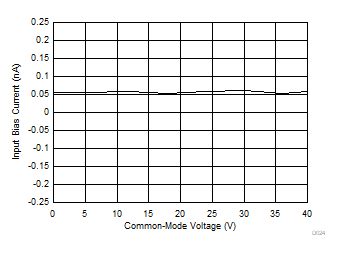 Figure 6-14 Input
Bias Current vs. Common-Mode Voltage
Figure 6-14 Input
Bias Current vs. Common-Mode VoltageFigure 6-16 Input
Bias Current vs. Temperature Figure 6-18 Quiescent Current vs. Temperature (Disabled) 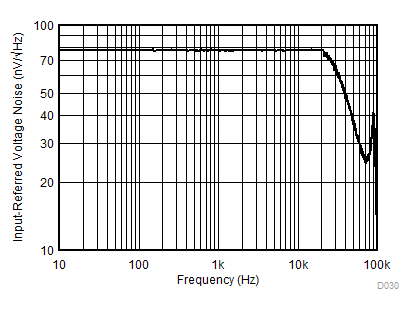 Figure 6-20 Input-Referred Voltage Noise vs. Frequency
Figure 6-20 Input-Referred Voltage Noise vs. Frequency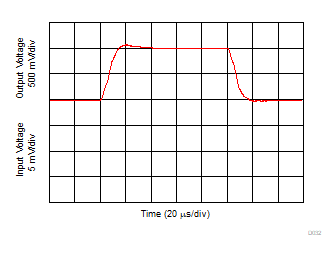 Figure 6-22 Step Response (10-mVPP Input Step)
Figure 6-22 Step Response (10-mVPP Input Step)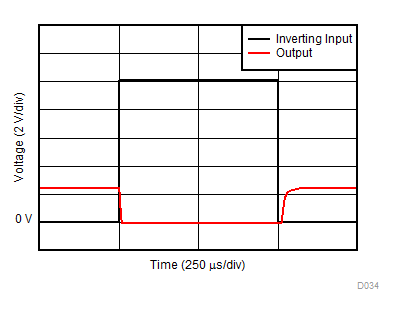 Figure 6-24 Inverting Differential Input Overload
Figure 6-24 Inverting Differential Input Overload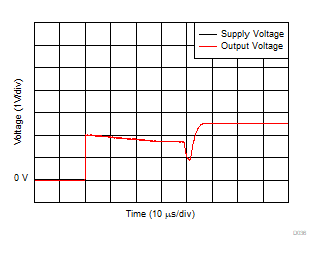 Figure 6-26 Start-Up Response
Figure 6-26 Start-Up Response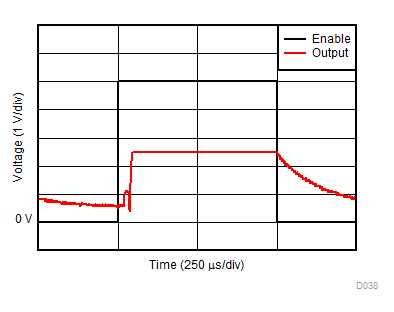 Figure 6-28 Enable and Disable Response
Figure 6-28 Enable and Disable Response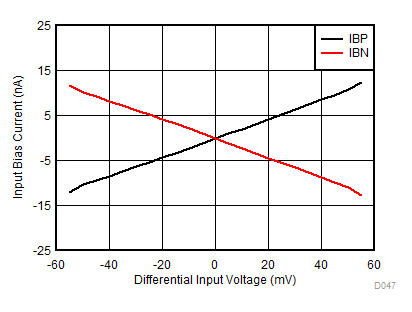
| VS = 5.0 V, VREF = 2.5 V, A2, A3, A4, A5 devices |
| VS = 5.0 V, VENABLE = 0 V,
VREF = 2.5 V |
Figure 6-32 Output Leakage vs. Output Voltage (A4 and A5 Devices)





















